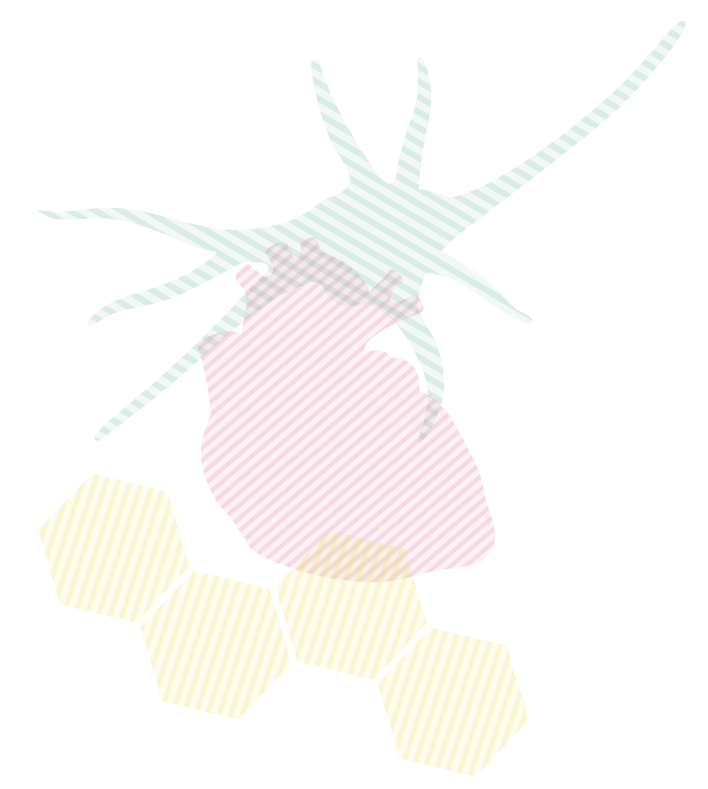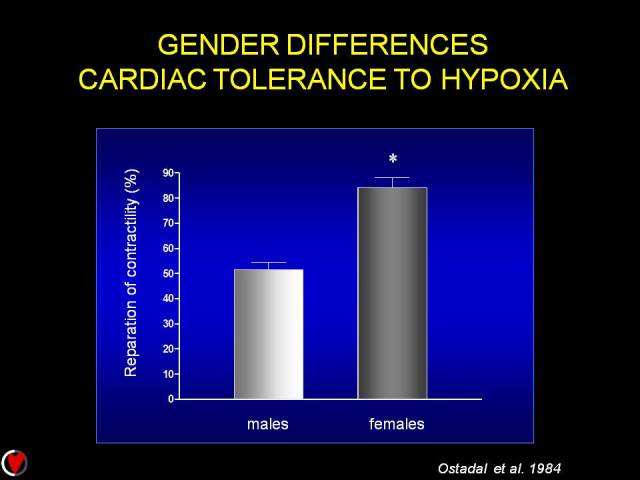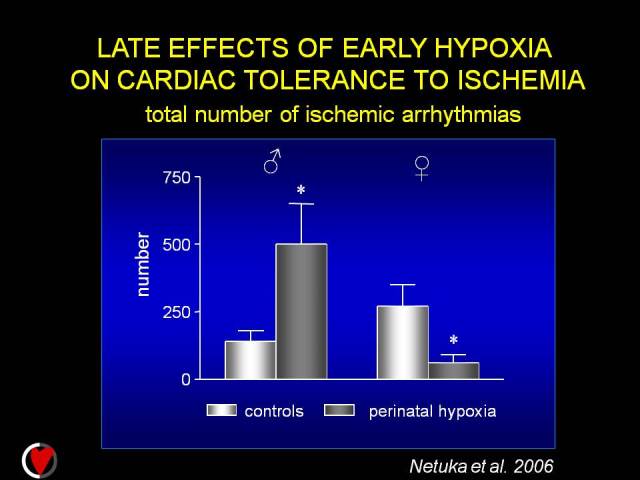The findings of experimental cardiologists from Institute of Physiology contribute significantly to the prevention and treatment of coronary heart disease
Epidemiological studies clearly show that pre-menopausal women start coronary heart disease about 10 years later than men; the causes are probably sex differences in the development of atherosclerotic changes. However, after menopause, the incidence of this disease increases more than 10 times in women, whereas in men of the same age it increases only 4.5 times. Experimental studies largely confirm the clinical observations.
Experimental cardiologists at the Institute of Physiology have two priority observations in this area:
1. they were the first to find that the isolated ventricle of the female laboratory rat heart is significantly more resistant to oxygen deprivation than the male ventricle;
2. they showed that exposure of cardiac muscle to oxygen deprivation during the early stages of ontogenetic development significantly affects the resistance of adult myocardium to hypoxia, in a sex-dependent manner: while resistance is increased in females, hypoxic damage is significantly more pronounced in adult males.
These results have undeniable relevance for clinical practice, especially for the prevention and treatment of coronary artery disease and for monitoring the late consequences of cyanotic congenital heart disease. The following review summarizes the current knowledge on sex differences in the sensitivity of cardiac muscle to oxygen deprivation and suggests perspectives for further experimental research in this clinically relevant area.
Fig. 1 Sex differences in sensitivity of isolated right ventricle to oxygen deprivation
Fig. 2 Effect of perinatal hypoxia on the sensitivity of adult heart muscle to oxygen deprivation: protective effect in females
Ošťádal B. Ošťádal P.: Sex-based differences in cardiac ischaemic injury and protection: therapeutic implications. British Journal of Pharmacology, 171:541-554, 2014












